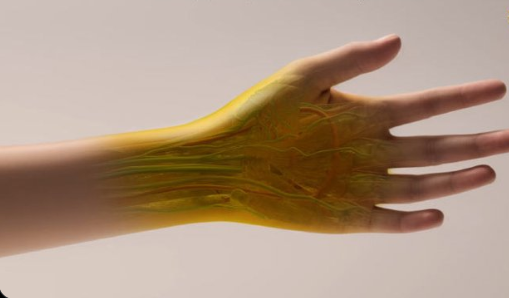This research, published in Science, has significant potential medical applications. For instance, it could eventually help with non-invasive diagnostic techniques such as viewing blood vessels, detecting early-stage cancers, or assisting with procedures like laser tattoo removal( Home Page and Phys.org The technique’s success in mice raises the possibility of future applications in human medicine, though human skin’s thickness might pose challenges livescience.com
Researchers at Stanford University have made a significant breakthrough by utilizing a common food dye to render the skin, muscle, and connective tissues of living animals temporarily transparent. This development allows for the internal structures such as organs and blood vessels to be visible without invasive procedures.
Stanford researchers use food-safe dye to make skin transparent, offering new ways to diagnose and treat diseases
Read more…. 🔗 https://t.co/Gl5mZONx2U#News #Research #Science #Lab #Laboratory #Innovation #Medicine #ScienceBreakthroughs #Medical pic.twitter.com/zso0OvGWeM
— Lab Horizons (@Lab_Horizons) September 5, 2024
The dye was applied to the abdominal area of a mouse, rendering its liver, intestines, and bladder visible through the skin. Similarly, applying the dye to the rodent’s scalp made it possible to observe the blood vessels within its brain. Remarkably, the skin returned to its normal appearance once the dye was washed off, highlighting the reversible nature of this technique.
Dr. Guosong Hong, a senior researcher on the project, pointed out the potential applications of this discovery in human medicine. These include locating injuries, easily finding veins for blood draws, monitoring digestive disorders, and diagnosing tumours without the need for invasive surgeries or biopsies. This method could simplify many medical procedures, making them less painful and more efficient.
The concept, inspired by the science fiction of HG Wells’s “The Invisible Man,” involves matching the refractive index of tissues—essentially the way tissues bend light—to make them transparent. The food dye, tartrazine, used in products like Doritos and SunnyD, alters the refractive indices of tissues, allowing light to pass through with reduced scattering.
Scientists Use Food Dye to Make Skin Temporarily Transparent. The technique, not yet tested on humans, allows visualization of internal organs in live animals and could potentially facilitate non-invasive medical diagnoses and procedures in the future. pic.twitter.com/KMQMJlATk5
— Attabit News (@AttabitAI) September 6, 2024
In their published findings in the journal Science, the team demonstrated how chicken breast tissue could become transparent to red light after being immersed in a tartrazine solution. Further experiments included making a mouse’s underbelly see-through to reveal its internal organs and visualizing brain blood vessels using laser speckle contrast imaging.
This method’s reversibility and repeatability were emphasized, suggesting that future applications could involve deeper tissue penetration possibly via microneedle patches or injections. However, before any human applications, it will be crucial to establish the safety of such procedures, especially if the dye is administered beneath the skin.
Researchers at Stanford University have discovered that an aqueous solution of the FDA-approved food dye tartrazine can make the skin, muscle, and connective tissues of live animals transparent. This innovative technique has potential for various applications in biomedical … pic.twitter.com/fiCcJdojwN
— Science In 60 Mins (@ScienceIn60Mins) September 5, 2024
The transparency technique holds promise not only for medical diagnostics but also for biological research, where studying transparent organisms like zebrafish helps scientists observe how diseases, such as cancer, develop in living creatures. This method could expand the range of animals available for such studies, enhancing our understanding of numerous biological processes and diseases. The broad potential of this technique has generated considerable excitement in the scientific community, with experts from Imperial College London predicting widespread interest and applications in modern imaging and medical diagnostics.
Major Points:
- Researchers at Stanford University have developed a method using a common food dye, tartrazine, to make the skin, muscle, and connective tissues of living animals temporarily transparent, enabling the visualization of internal organs and blood vessels.
- The transparency effect is reversible, as treated skin returns to its normal color after the dye is washed off, offering a non-invasive alternative to traditional medical imaging and surgical procedures.
- This technique could revolutionize medical diagnostics, making it easier to locate injuries, find veins for blood draws, monitor digestive disorders, and diagnose tumors without invasive biopsies or surgeries.
- Inspired by HG Wells’s novel “The Invisible Man,” the method involves altering the refractive indices of tissues with tartrazine dye to reduce light scattering, allowing clearer visibility of internal structures.
- While promising for both medical and research applications, the safety of this dye technique, especially for human use involving deeper tissue penetration, remains to be thoroughly tested and approved.
Charles William III – Reprinted with permission of Whatfinger News

